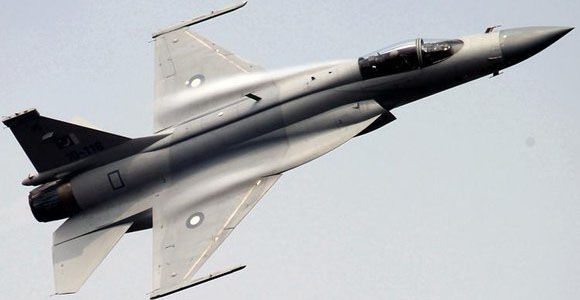
March 22nd, 2011: The first Oliver Hazard Perry (OHP) Class frigate, acquired by Pakistan Navy from United States, set sail for Pakistan on Monday.The ship, formerly USS McINERNEY (FFG-8)), was commissioned in the Pakistan Navy as PNS ALAMGIR (F-260) on August, 31, 2010 in an impressive ceremony at Naval Station Mayport, where Pakistan’s Ambassador to the United States Husain Haqqani was the chief guest.After commissioning, PNS ALAMGIR has undergone extensive modernization and refurbishment at BAE, System Shipyard at Jacksonville Florida. A total of 18 Officers and 218 CPO/ Sailors, who started arriving the US in February 2010,underwent In-house School Training at various schools.
The Ship Transfer and Assistance Team (STAT) had a major contribution in training of the crew at Naval Station, Mayport. PN crew stay in the US contributed towards greater understanding on issues of mutual concern besides strengthening relations between the two countries. Captain Naveed Ashraf T.Bt TI(M) is the first Commanding Officer of PNS ALAMGIR.
Upon completion of successful sea trials and crew workup, the ship set sail for Pakistan on Monday. During her voyage, it will be making port calls in Bermuda (UK), Azores (Portugal), Cadiz (Spain), Golcuk (Turkey), Jeddah (Saudi Arabia) and Salalah (Oman) and would eventually reach Pakistan on 13 May 2011.
PNS ALAMGIR will form part of the 18th Frigate Squadron of Pakistan Navy Fleet.Pakistan is an important member of Global War On Terror (GWOT).In consonance with Pakistani government’s decision to fight terrorism in all its manifestations, Pakistan Navy joined the US-led maritime coalition against terrorism by participating in Coalition Maritime Campaign Plan (CMCP), which is the maritime component of the Global War on Terrorism (GWOT). It encompasses maritime operations in support of Operation Enduring Freedom (OEF). Coalition forces work under overall command of United States Naval Forces Central Command (US NAVCENT) which is the Naval component of US CENTCOM. Its area of responsibility includes the Red Sea, Gulf of Oman, Persian Gulf and Arabian Sea.
It consists of the US Fifth Fleet and several other subordinate task forces, including Combined Task Forces 150 and 151.These task forces have been assigned different mission and areas of responsibilities for conducting maritime operations in support of CMCP.
Despite resource constraints, Pakistan Navy has been a front-line participant in the CMCP. Pakistan Navy was the first regional navy to form part of CMCP and has significantly contributed its assets to ensuring peace and stability in the region. Since April 2004, Pakistan Navy has contributed one frigate in TF-150 regularly. In addition, the PN also contributes a Type-21 frigate (with embarked helicopter) in TF-151 for counter-piracy operations.
Pakistan Navy has commanded TF-150 four times and is currently commanding the CTF-151 off the coast of Somalia. Pakistan was the first non-NATO country to command the Task Force.
Oliver Hazard Perry Class Frigates are being operated by many navies in the world. These ships are most suited for conducting Maritime Security Operations, which have become the prime concern of the nations.
PNS ALAMGIR will augment Maritime Security Operations in the Arabian and the adjoining seas. It will also provide strength to the Pakistan Navy Surface Fleet.
PNS ALAMGIR is named after emperor Aurangzeb Alamgir (1618-1707), who was the sixth Muslim ruler of Great Mughal Empire. Alamgir was an able warrior, who fiercely protected his territories and retained the throne for almost 50 years. He spread the extent of Mughal Empire to the entire Indian Sub-continent and is generally considered to be the last successful Mughal emperor.
PNS ALAMGIR is the third ship to bear this name. The first one was Cr Class Destroyer which was decommissioned in 1982 after remaining in service for about 24 years. The second was Gearing Class Destroyer and remained in service from 1982-1988.











